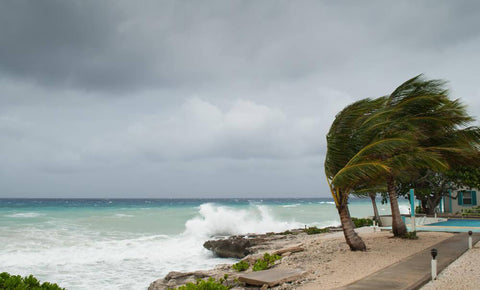How a Reinforced and Bottom-Sealed Garage Door Provides Hurricane Protection
Most homeowners who live in areas prone to hurricanes understand what they must do to protect their houses from these devastating storms. They know to take precautions such as protecting windows, using tarps and securing loose items. However, not as many people think about their garage doors. They assume that because they are large and heavy, they already offer adequate protection against the elements — but this isn’t necessarily the case. To provide the most defense against gale-force winds and punishing rain, reinforcement and proper weather sealing are required.

THE BENEFITS OF A REINFORCED DOOR
Giving a garage door hurricane protection means bolstering it with a little something extra than most typical models. A standard version simply isn’t constructed to withstand the force of 100-mile-per-hour winds. That’s not to mention the debris that a hurricane often brings in its wake. All of that slamming against a door constructed with the average home in mind can create some serious problems. It can be pulled off its hinges, crumple or even explode outward due to the pressures building up inside the structure.
Still, a reinforced garage door stands a much better chance against that type of power. There are two main ways homeowners can protect their doors. The first is to purchase a model that was manufactured with reinforcing elements integrated into it. In many cases, these models provide maximum protection against severe weather simply by locking them.
The other option is to buy an add-on system that can be installed onto a standard door. These typically consist of floor-to-ceiling posts that can be placed behind the door in the event of a storm warning. They will provide additional bracing to strengthen the door during the hurricane. Afterwards, they can be removed.
WEATHER STRIPPING MAKES A DIFFERENCE
Even if the door is fortified with additional supports, a garage still may be at risk of serious damage during a hurricane. That’s because many doors aren’t entirely flush with the floor. They have gaps where water can enter. When a tropical storm dumps hundreds of gallons of rain in front of a home, those gaps mean the structure and everything in it will be soaked. That leads to problems long after the clouds go away because of mold, mildew and rust.
This is why a reinforced garage door should be paired with a watertight seal along the bottom. The seal effectively closes any spaces between the bottom edge and the floor. Tight weather stripping blocks water from getting into the property, preventing damage and keeping everything dry. It also protects the interior from rodents or other pests that might be seeking shelter during a storm.
Most garage doors are built with typical weather in mind. This won’t do for homeowners who live in coastal areas frequently threatened by hurricanes. Protecting their homes and families from these forces of nature means ensuring that their doors are as strong as they can be and feature an adequate bottom seal.
